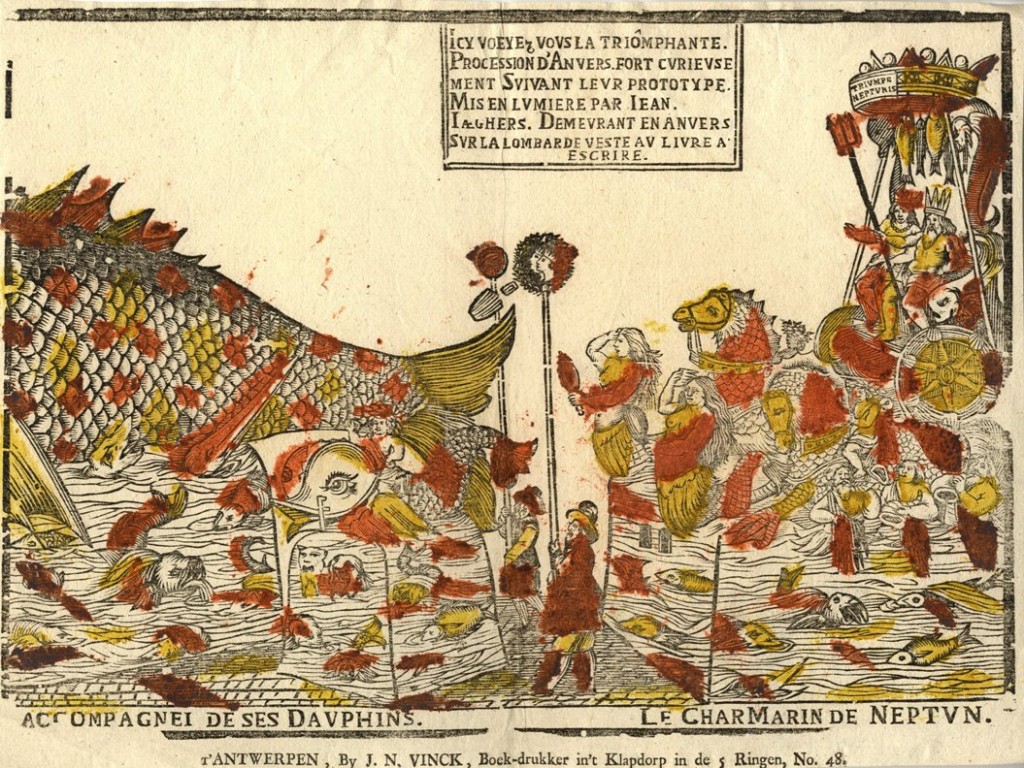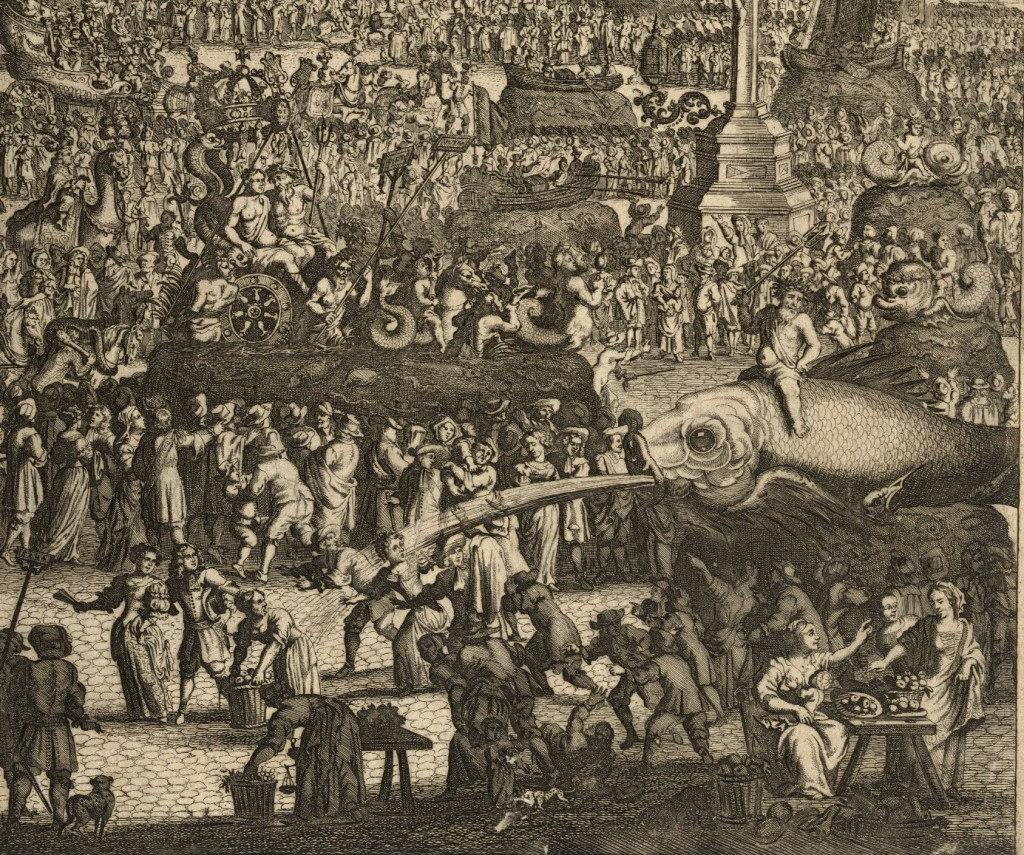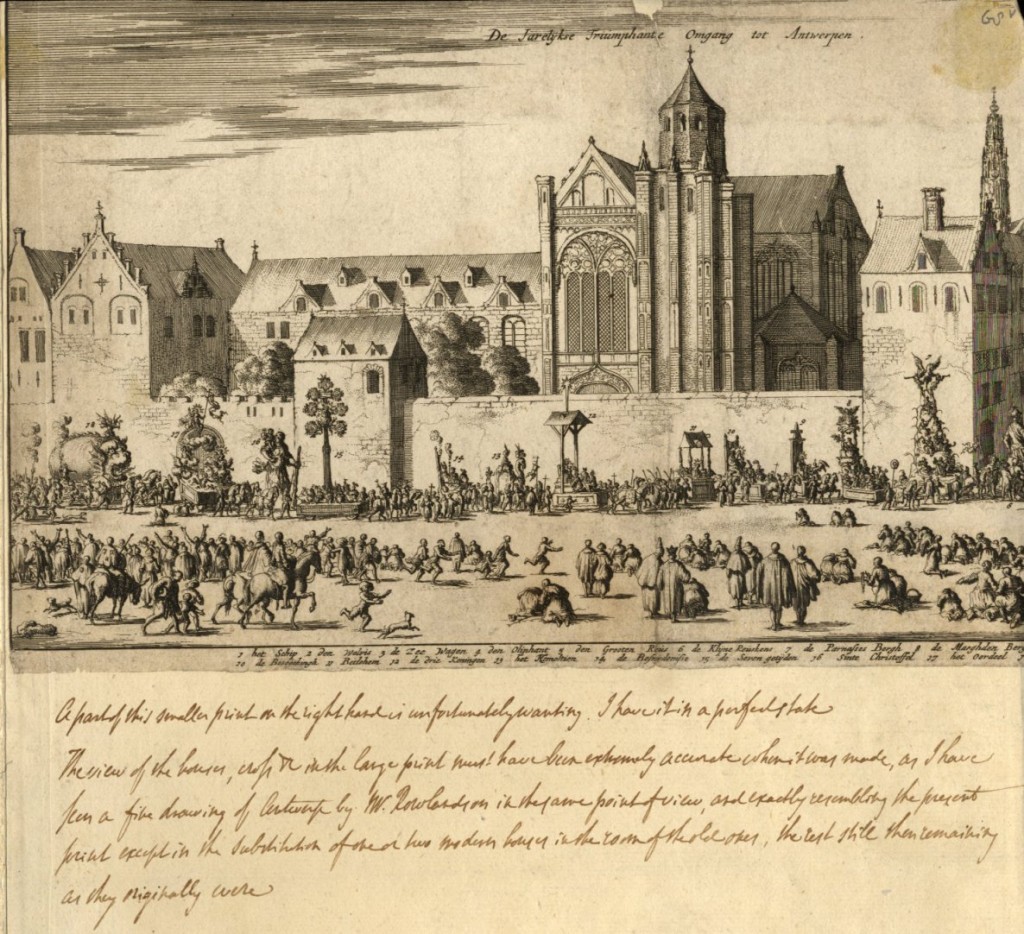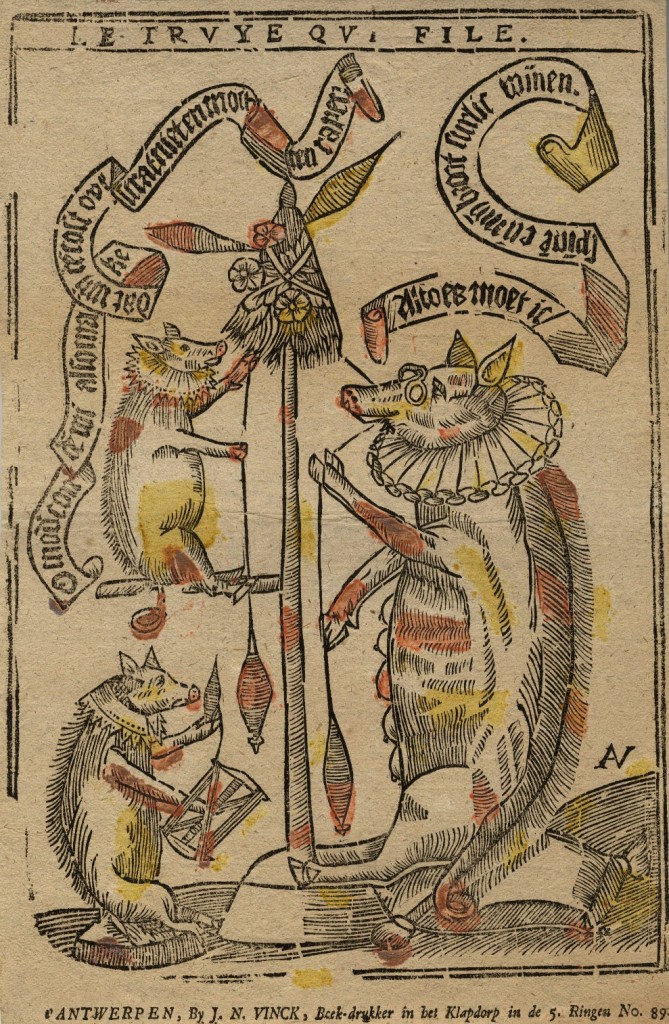Douce collected a remarkable number of woodcuts published by the Antwerp-based book-seller Joannes Norbertus Vinck. They are mostly popular prints, often coloured (a bit coarsely) in yellow and red. My favourite is this bespectacled spinning sow:
Although the theme of the spinning sow dates back to the Middle Ages (see Malcolm Jones’s article on ‘Folklore motifs in Late Medieval Art’ in Folklore, 1991), the version above might have been produced in the seventeenth century. Vinck was active in the late eighteenth-century, but his woodcuts were probably printed from older woodblocks. He also published this depiction of Antwerp’s annual ‘ommegang’, or ‘very curious triumphal procession’:

Anonymous, Le Chamarin de Neptune accompagnei de ses Dauphins, late 18th century, coloured woodcut (Ashmolean Museum, Oxford)
A different image of the ‘ommegang’ of 1685 by Gaspar Bouttats (1625-1695) can be found among Douce’s prints of ‘Ceremonies’. The chariot carrying Neptune and Amphitrite surrounded by dolphins, Tritons and mermaids follows the enormous fish whose tail is depicted in Vinck’s woodcut -the only disappointment is the disappearance of the waves among which the standard-bearers walked oblivious to the scary sea-monsters and the fish swimming about:

Gaspar Bouttats, Antwerpse ommegang van 1685 Verbeeldinghe vanden Triumphanten Jaerelycksen Ommeganck van Antwerpen, 1685, etching (Ashmolean Museum, Oxford). Detail.
On the back of the piece of cardboard to which the print is attached, Douce pasted a fragment of another view of the same event by Jan Luyken (1649-1712) and he wrote some comments below:

Jan Luyken, De Jarelykse Triumphante Omgang tot Antwerpen, c. 1680-81, etching (Ashmolean Museum, Oxford)
The drawing mentioned by Douce in his annotation is probably this watercolour in the V&A:
Thomas Rowlandson’s La Place de Meir, Antwerp
When Douce wrote that the location depicted in the print was found almost unchanged by Thomas Rowlandson at the time of his journey to the Low Countries in 1791-92, he was clearly referring to the etching by Bouttats, who showed the procession at exactly the same point chosen by Rowlandson. Given that this blog is still rather low-tech, I am borrowing an image of the print from the Rijksmuseum’s wonderful website that allows zooming in and out to one’s heart’s content:
Antwerpse ommegang at the Rijksmuseum

